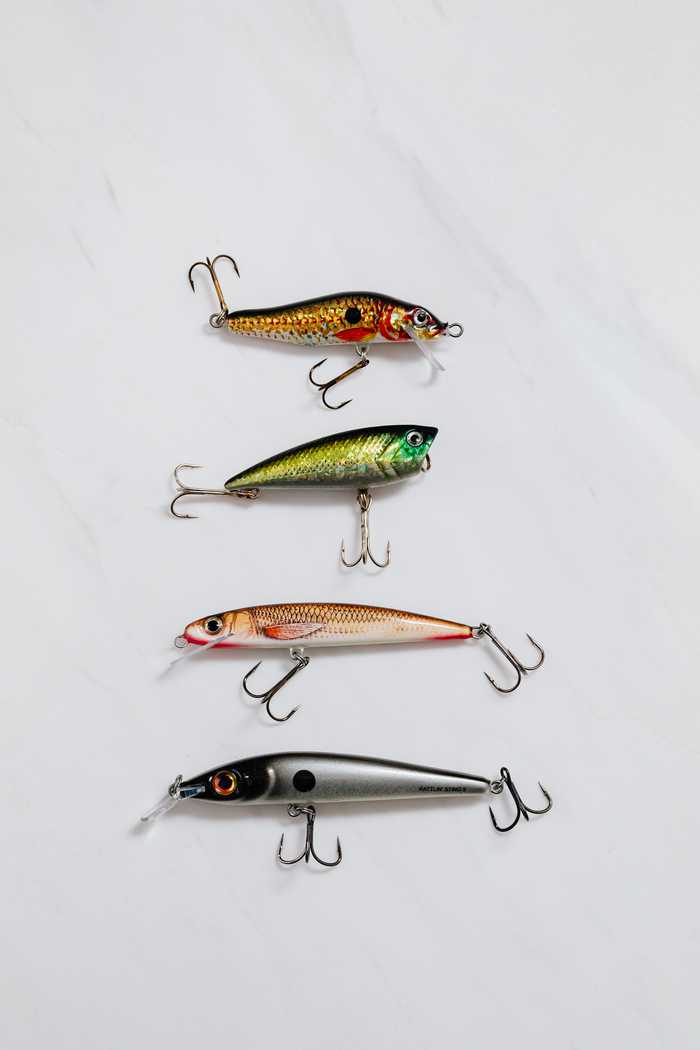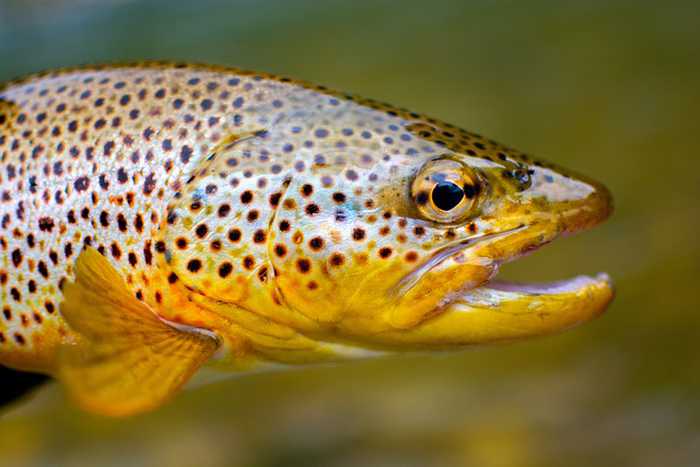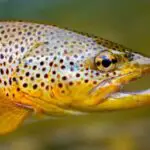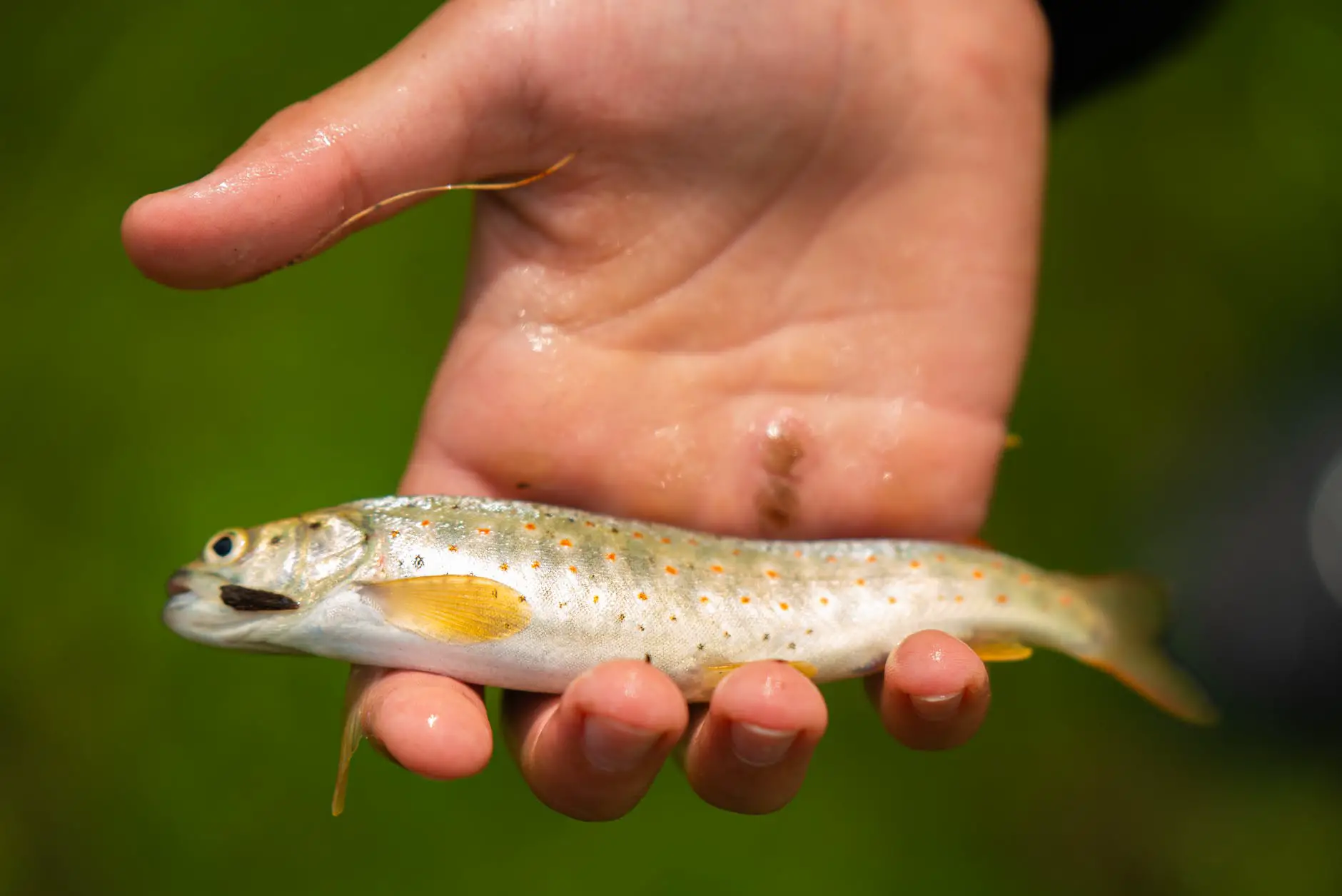There are many different ways to catch trout in a river, but one of the most effective methods is by using baitfish. Baitfish imitate the small fish that trout feed on, so they are very attractive to these predators.
To catch trout with baitfish, you will need to use a small hook and some light line. Attach the baitfish to the hook carefully, making sure that it is securely hooked. Then cast your line into areas where you think there might be trout lurking. Remember that trout tend to stay near cover such as logs or rocks, so look for these features when you are fishing.
Patience is key when using this method – wait for a bite before setting the hook.
How do you catch rainbow trout for beginners?
Fishing for rainbow trout can be a fun and rewarding experience for anglers of all levels. If you’re new to fishing for these beautiful fish, here are a few tips to help you get started.
One of the best ways to catch rainbow trout is by using baitfish. Smaller fish such as minnows or shiners are great options. You can either use live bait or artificial lures that mimic the appearance and movement of real baitfish. Another option is to use worms, insects, or small pieces of fruit as bait.
When it comes to where to fish for rainbow trout, look for areas with deep pools of water and plenty of cover such as logs, rocks, or vegetation. Rainbow trout tend to prefer cooler waters so streams and rivers in mountainous regions are usually good places to start your search.
Once you’ve found a promising spot, it’s time to start fishing! If you’re using live bait, try casting your line close to cover where the fish are likely hiding out. For artificial lures, cast your line upstream and let the current carry it downstream past any potential hiding spots. Be sure to keep an eye on your line so you can reel in any bites quickly.
How do you catch rainbow trout in a river?
In order to catch rainbow trout in a river, you will need to use the right type of bait and equipment. Rainbow trout are known to be attracted to small, brightly-colored lures, so using a lure that is similar in size and color to the natural prey of rainbow trout is a good idea.
Another good tip is to fish in areas where there is an abundance of food for the rainbow trout, such as near submerged logs or rocks where insects might be hiding. Finally, using a light line and rod will help you avoid spooking the fish when they strike at your bait.
What depth do you catch rainbow trout?
Rainbow trout are often found in depths of 4 to 8 feet, although they can feed deeper. They tend to be most active just past the lip of the first significant drop leading to shallow flats. Because they spook easily, anglers must move quietly and carefully when fishing for them, whether in a boat, onshore, or wading.
What is the best method of catching trout I?
There is no one-size-fits-all answer to the question of what is the best method of catching trout. While fly fishing may be the most effective way to target trout in moving water, other methods like trolling or jigging can be more successful when fishing in still waters like lakes and reservoirs. Ultimately, it depends on the specific conditions you are facing and what type of fish you are targeting.
What lures do river trout like?
There are a few different types of lures that river trout seem to like. One is the rooster tail spinner. Another is the Mepps Aglia spinner. Panther Martin spinners are also popular with river trout.
Blue Fox spinners are also effective, as are Kastmaster spoons and Phoebe spoons. Krocodile spoons can also be very effective, especially when fishing for larger river trout. Flatfish are another good choice when fishing for river trout.

What is the best way to trout fish?
There is no one-size-fits-all answer to the question of how best to trout fish. Different anglers have different preferences, depending on the type of trout fishing they’re doing and the conditions they’re facing. In general, though, there are some tips that can help any trout fisherman up their game.
One important tip is to use the right kind of bait or lure. This will vary depending on what kind of trout you’re trying to catch – for example, brown trout tend to go for nymphs or streamers, while rainbow trout prefer spinners or spoons. Knowing which bait or lure to use can make a big difference in your success rate.
Another key tip is to pay attention to the water temperature. Trout are Coldwater fish, so they prefer cooler temperatures. In general, you’ll have more luck catching trout in early morning or evening when the water is cooler than it is during midday hours. Paying attention to changes in weather and water temperature can give you an edge when it comes to finding active fish.
Finally, it’s always important to practice proper catch-and-release techniques when fishing for trout (or any other fish).
Do trout swim shallow or deep?
There is no definitive answer to this question as trout can swim in both shallow and deep water depending on the situation. In general, however, trout tend to prefer shallower water where they can more easily find food and avoid predators. Trout will also sometimes swim in deeper water if they are seeking refuge from high temperatures or low oxygen levels in shallower areas.
What is the best lure to use in a river?
For many anglers, jigs are considered the best lures for river fishing near the mouth of a river. Jigs work well in areas of slower current and can be used to target walleye near shorelines. The size of the jig will depend on the strength of the current, with 1/4 to 1/8-ounce jigs being sufficient in most situations. In areas of stronger current, you may need to use a heavier jig, up to 1 ounce.
How deep do trout swim in a lake?
Lake trout are a popular target for anglers, and knowing where they tend to swim can give you an advantage when fishing. In the early spring and fall, lake trout are typically found at depths of between 35 and 45 feet (10.7 to 13.7m).
As the weather warms up in the spring and summer months, they will often move to deeper waters, ranging from 50 to 65 feet (15.4 to 19.8m). In cold weather conditions when the lake is iced over, trout may be found closer to the surface at depths of around 10 feet (3 m).
What bass lures to use in a river?
There are a few different bass lures that work well in a river. A soft plastic crawfish is a good choice, as it can be Texas-rigged on a worm hook or attached to a lightweight jig.
Heavier jigs tend to fall to the bottom, while a lighter lure or sinker will be swept by the current right in front of a bass’s nose.
Another good option is a spinnerbait, which can mimic the movement of small fish or insects and attract bass looking for an easy meal.
Do trout go deep?
Yes, trout go deep. In the spring, they are right up to the surface. As the water starts to warm up with the changing weather, they start to go deeper.
What should I use for river fishing?
There are a few different types of bait that work well for river fishing, depending on what kind of fish you’re hoping to catch. Live bait like nightcrawlers, minnows and leeches will usually attract a variety of bottom-feeding fish, such as catfish, carp and suckers.
If you’re targeting predator fish like trout, walleye or bass, then small minnow or crawdad imitators are often the best bet. Experiment with different baits until you find something that works well in your particular stretch of river.
What is the best bait for trout in a river?
There is no definitive answer to this question as different anglers have their own preferences when it comes to bait for trout fishing in rivers. However, there are some baits that are more commonly used than others and tend to be successful in catching trout.
One of the most popular baits is Berkley Powerbait. This bait is designed specifically for rainbow trout and is a go-to choice for many anglers. Another option from Berkley is Micetails, which takes its design inspiration from an egg and grub cocktail hook bait. Maggots are also a common choice of bait for river trout fishing, as they are small and easily eaten by the fish.
Berkley Trout Bait Nuggets are another option that many anglers use with success. These nuggets are made of compressed fishmeal and come in a variety of colors, making them appealing to trout. No matter what type of bait you choose, make sure to keep it fresh and replace it often if you want to maximize your chances of success when river fishing for trout.








